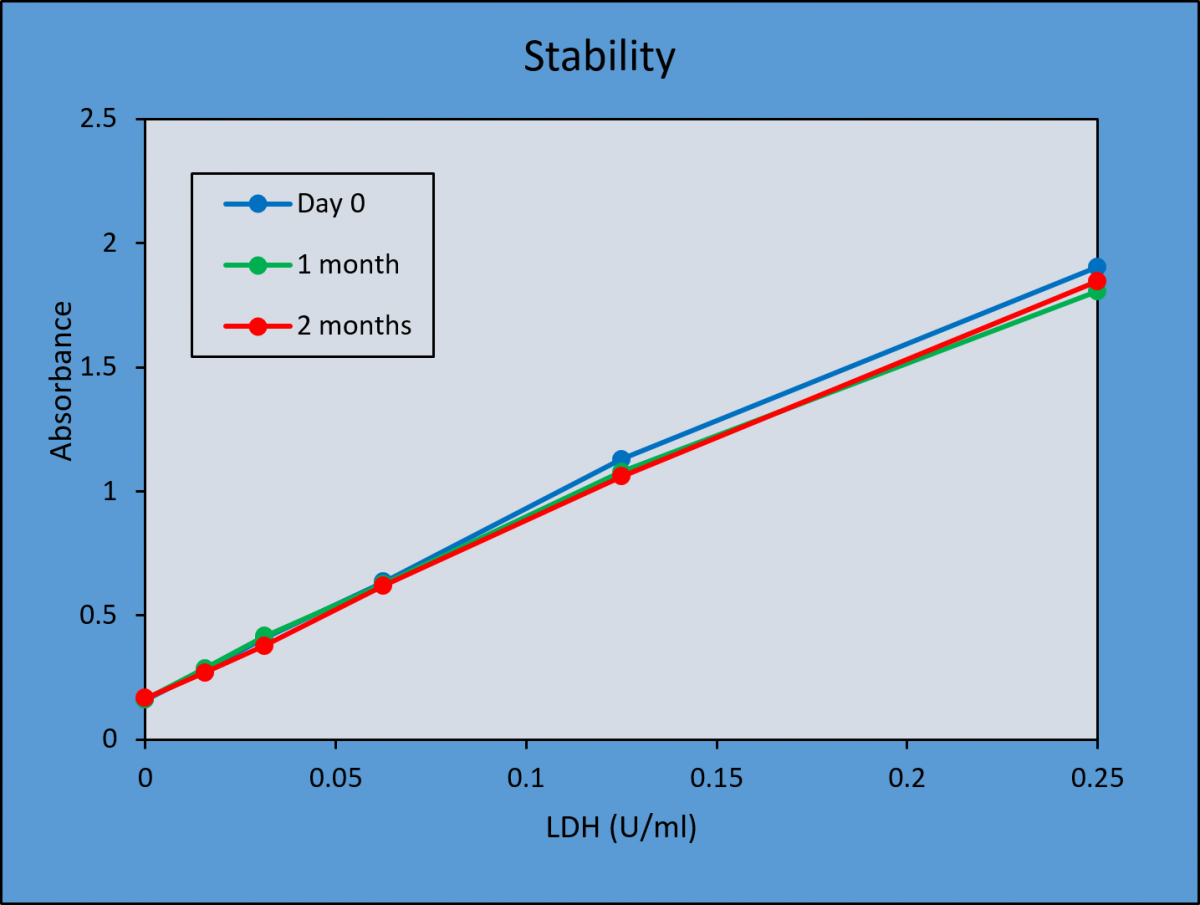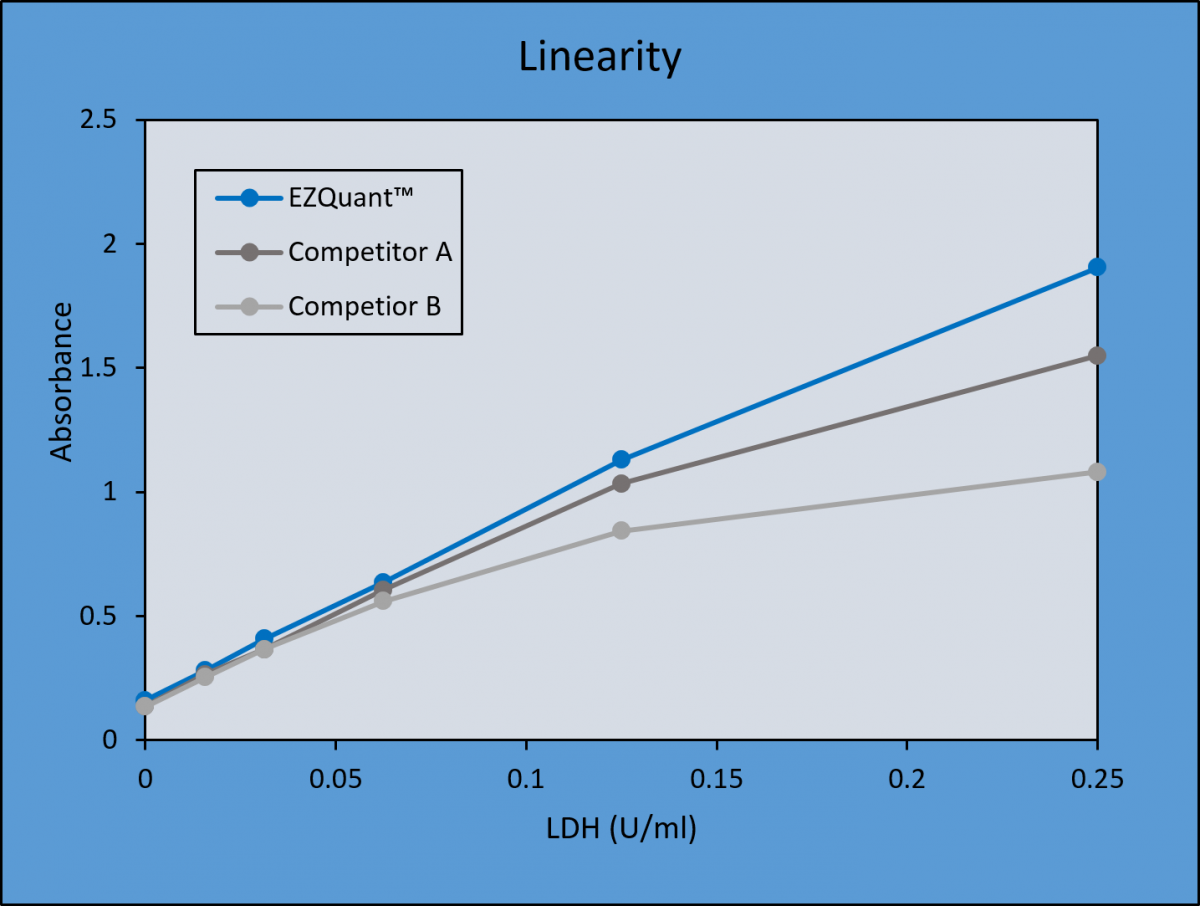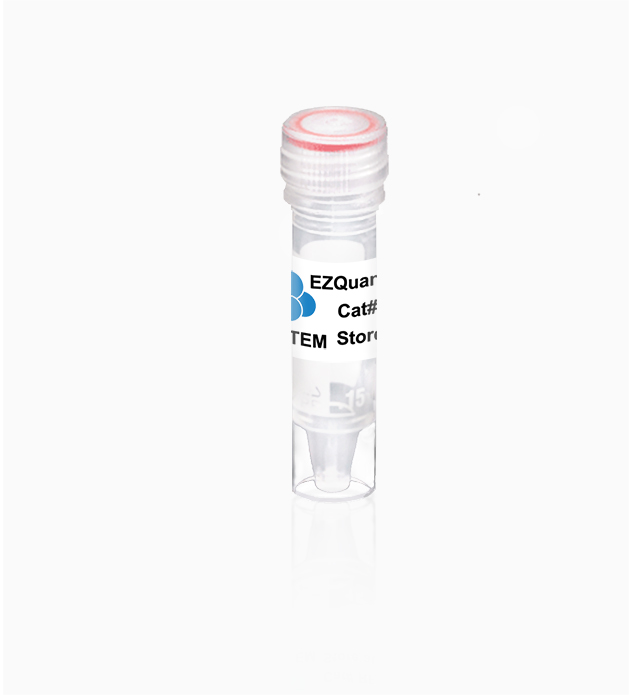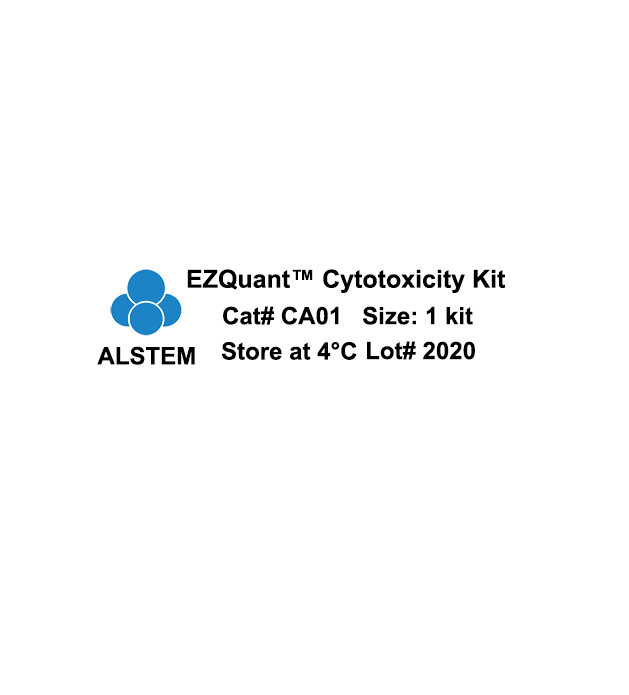EZQuant Cytotoxicity Assay Kit
| Catalog# | Unit | Unit Price (USD) | Actions |
|---|---|---|---|
| CA01 | 500 tests | $210.00 | Out of Stock |
| CA04 | 2000 tests | $475.00 | Out of Stock |
Highlights:
- High linearity range
- Long shelf-life without degradation (2 months at 0-5° C)
- Simple homogenous assay or non-homogenous (multiplex) assay possible
Description:
The EZQuant™ Cytotoxicity Assay Kit is used to assess cell death. It measures the level of LDH released when cells undergo stress or injury from chemicals that are toxic to the cells. The reagent is reduced by NADH that was oxidized by the extracellular LDH. Therefore, the amount of formazan produced is directly proportional to the number of dead cells.
Pair with EZQuant™ Cell Quantifying Kit
The EZQuant™ Cell Quantifying Kit conveniently determines the number of viable cells in cell proliferation and cytotoxicity assays. This product is useful for drug screening and cytotoxicity testing of chemicals. Meanwhile, the EZQuant™ Cytotoxicity Assay Kit determines the number of damaged cells and the degree of cytotoxicity. Combining these two products will allow researchers to fully understand the cell health conditions under various cytotoxic environments.


Specifications:
| Product Name | EZQuant Cytotoxicity Assay Kit |
|---|---|
| Shipping Condition | Room Temperature - 2 Day Shipping |
| Storage and Stability |
Store at 0-5° C |
| Quality Control | Appearance, blank, and sensitivity tests are performed for each lot. Only lots that pass the following criteria are offered: Blank Absorbance (460 nm) ≤ 0.700 Sensitivity Absorbance (460 nm) ≥ 1.000 |
| Restricted Use |
For Research Use Only. Not for use in diagnostic or therapeutic procedures. |
Peters, Molly C., et al. "A Novel Polyamine-Targeted Therapy for BRAF Mutant Melanoma Tumors." Medical Sciences 6.1 (2018): 3.


